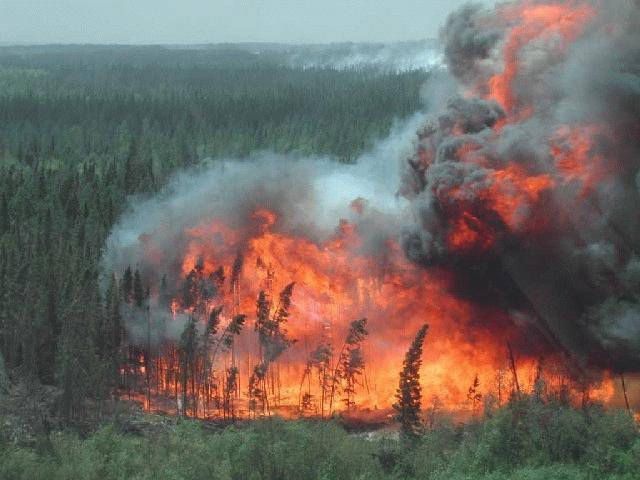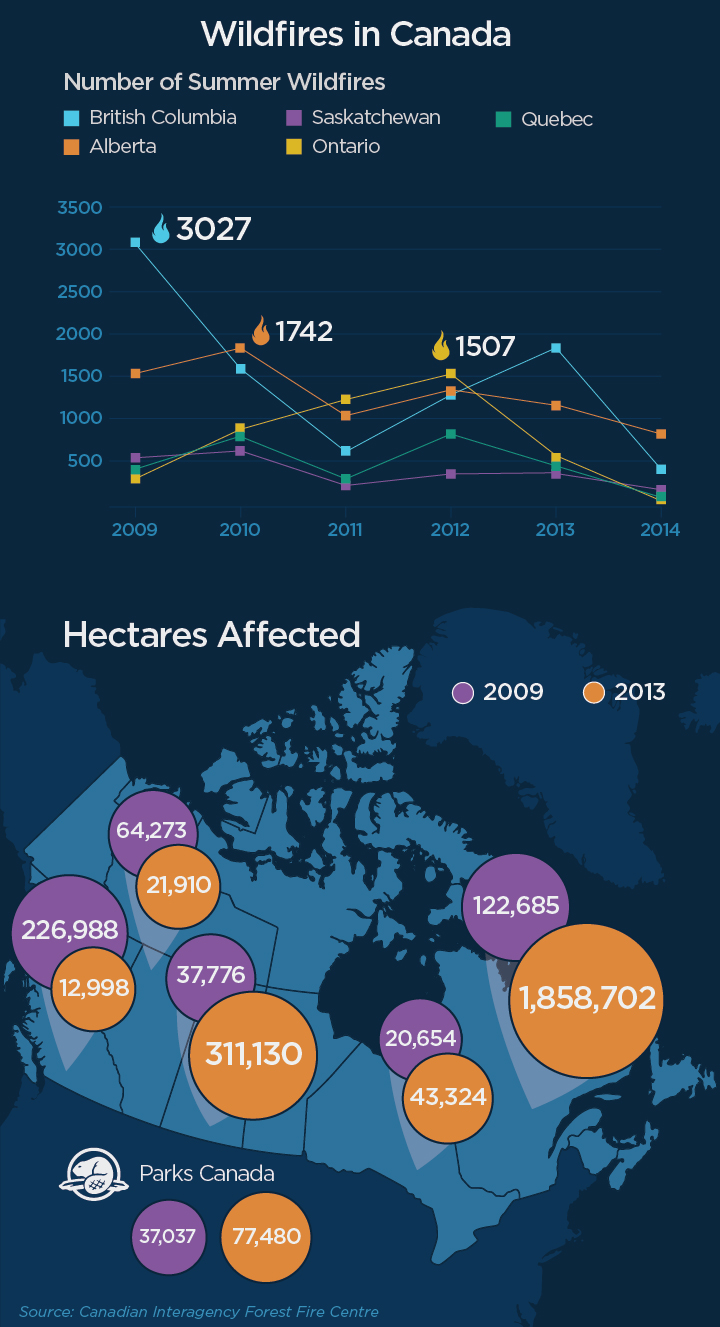Wildfires are tearing through Alberta and British Columbia, where soaring temperatures have turned forests to kindling.

The infernos seem like an endless destruction of homes and land. And while natural wildfires do play a role in an area’s ecology, they’re often exacerbated by changing weather and human intervention. Almost four million hectares were destroyed last year; this year, more than one million hectares have been destroyed – and counting.
Canada’s fire season usually lasts between April and the end of September. Here’s a look at how the summertime blazes compare from one year to another:
READ MORE: Fire near B.C.-Alberta border forces evacuation order
The number of fires and the damage it does can be mostly attributed to three variables, says Bruce MacNab, Head of Wildland Fire Information System:
1. Weather. Variability in weather can determine whether a fire starts and how long it lasts. Low rainfall in June, for example, could be contributing to the high number of fires in the Northwest Territories his year. A late spring, on the other hand, could push fire season back.
2. Fuel. The type and amount of vegetation can determine how far and fast a fire can spread. Insect devastation – think pine beetles – can make vegetation even more vulnerable.
3. Ignition. Without a source of ignition a fire isn’t going to start. About 50 per cent of fires are started by humans; the other half’s ignited by natural sources, usually lightning.
For the most part, provinces and territories manage their own fire response. The federal government is responsible for Parks Canada land. Firefighting capacity’s limited so provinces and territories are forced to create a “hierarchy of needs,” says MacNab. People and communities, resources and economic interests are usually a priority.
Each province and territory has its own set of challenges. For example, British Columbia’s Mountain Pine Beetle infestation killed trees and turned them into fire hazards. On the other hand, British Columbia experienced good rainfall over the last few years, MacNab says, which could explain the decrease in number of fires.
British Columbia traditionally sees most of its fires in August and September which could explain somewhat lower numbers so far this year, says Mark Mousseau of the Canadian Interagency Forest Fire Centre.
Wildfires aren’t new to Canada, he added. Creating comprehensive risk management plan is key to contain the damage to the land and hazards to people.




Comments